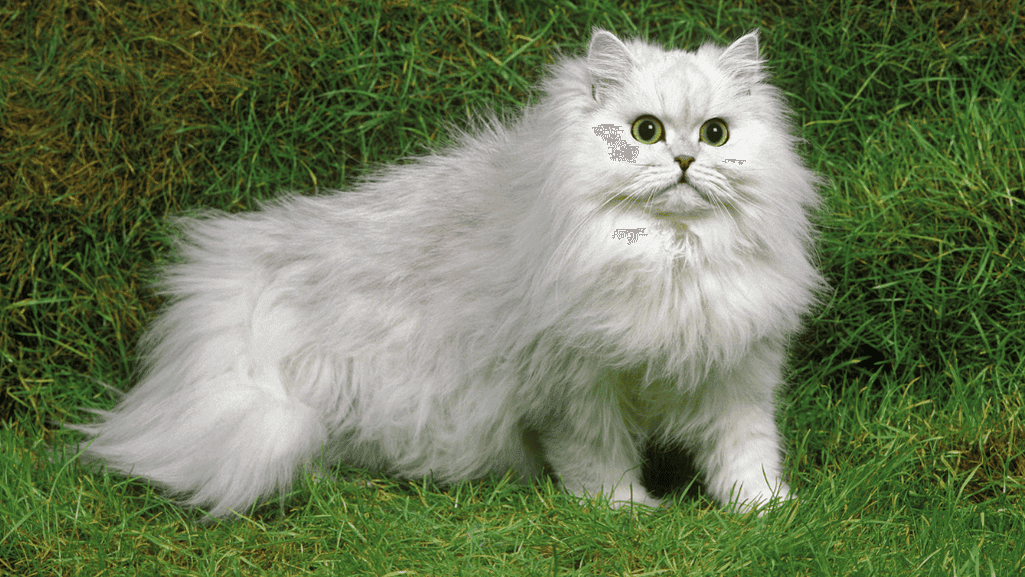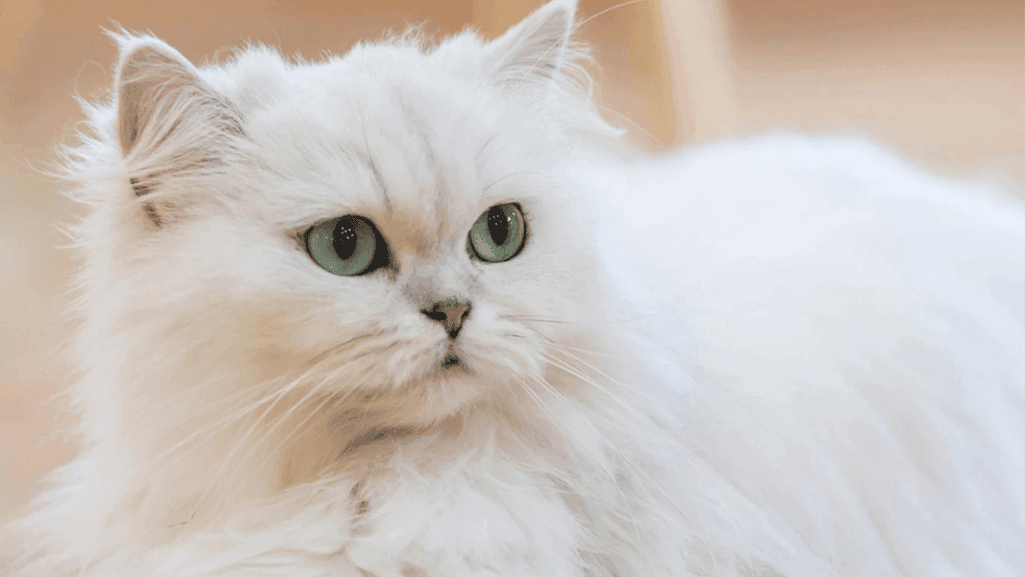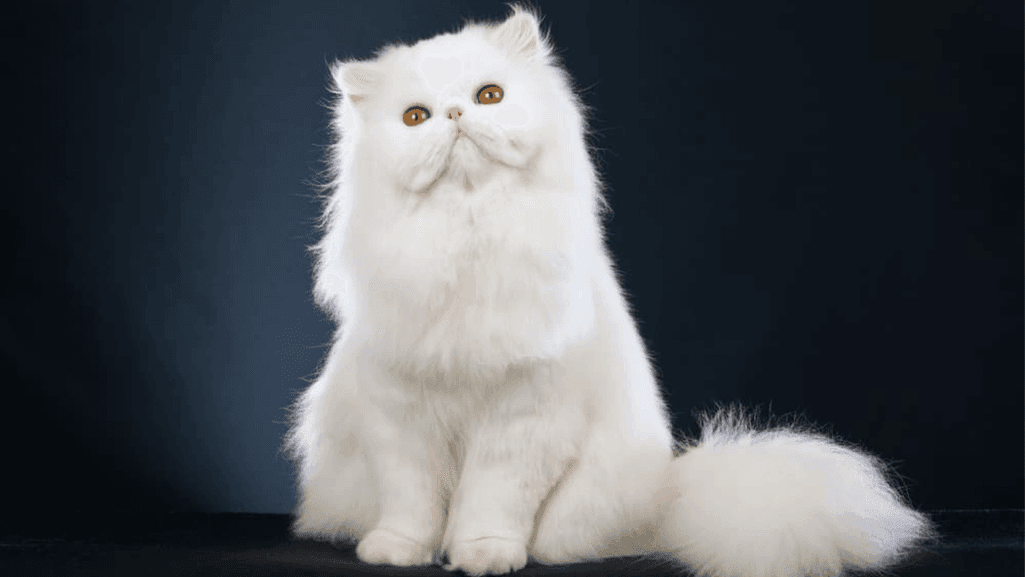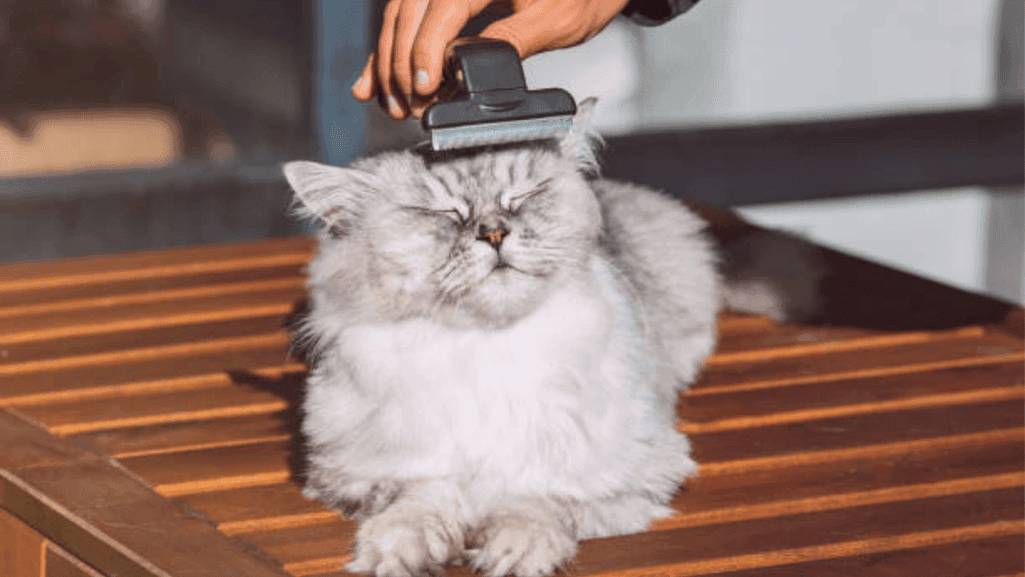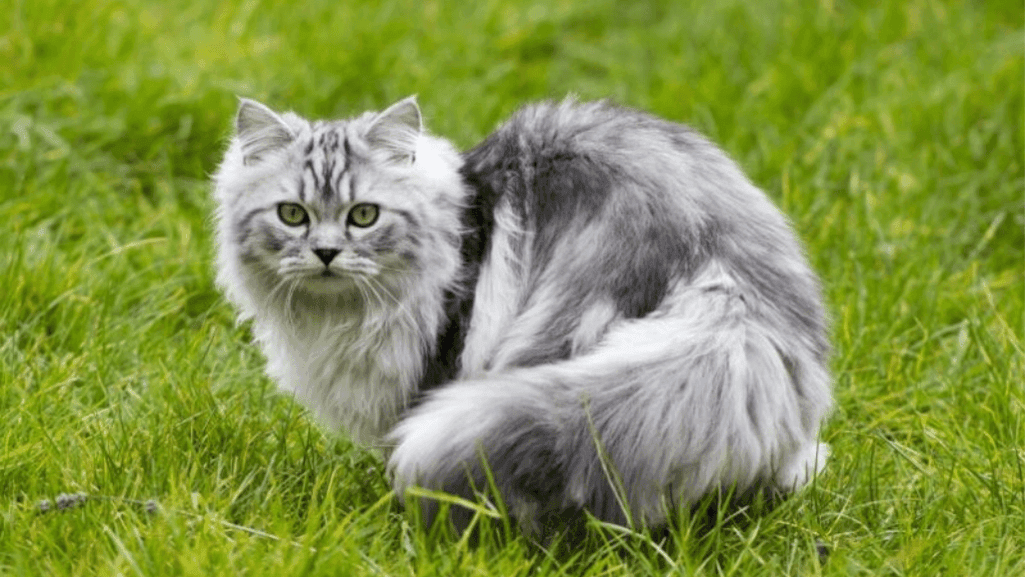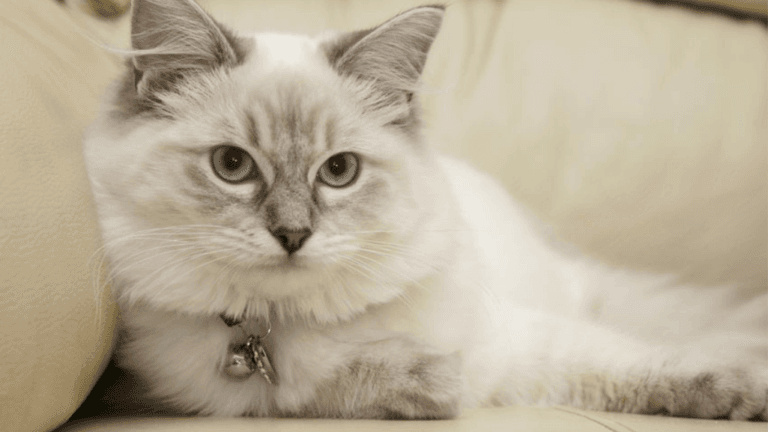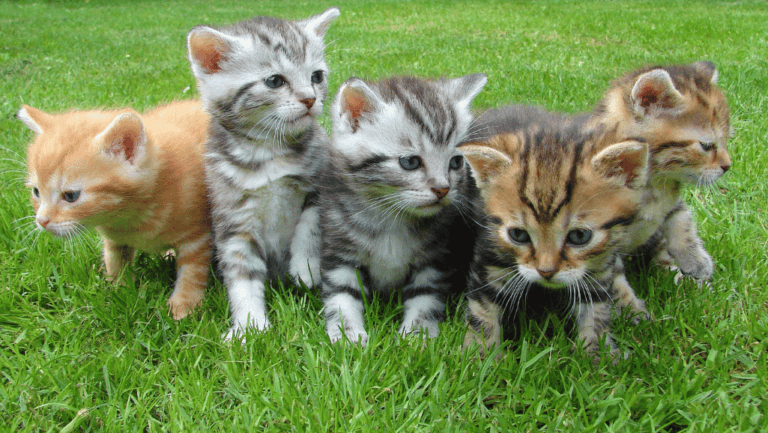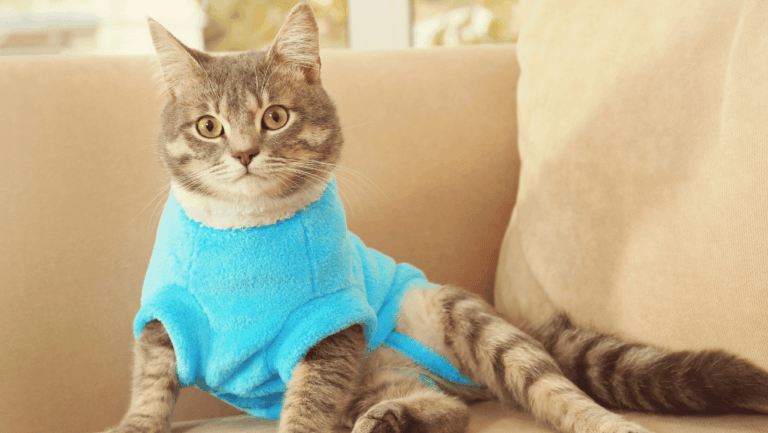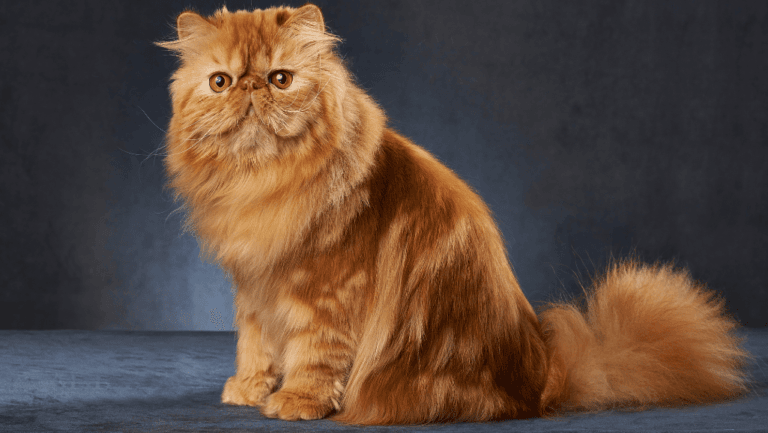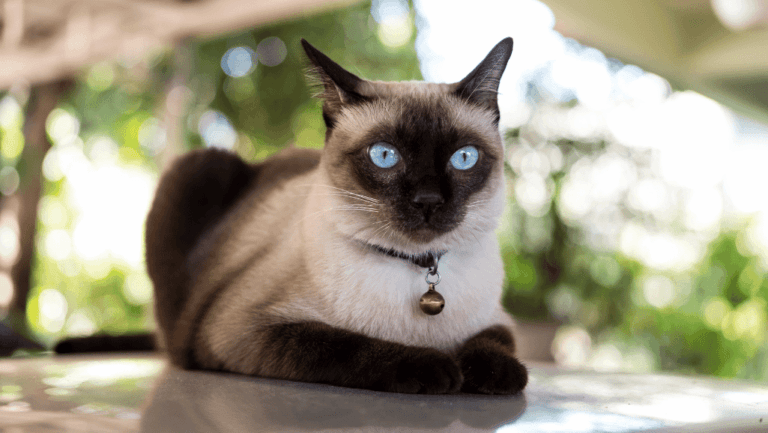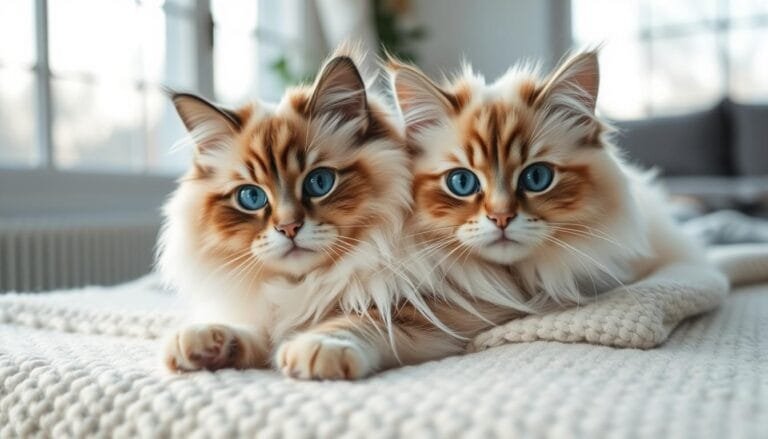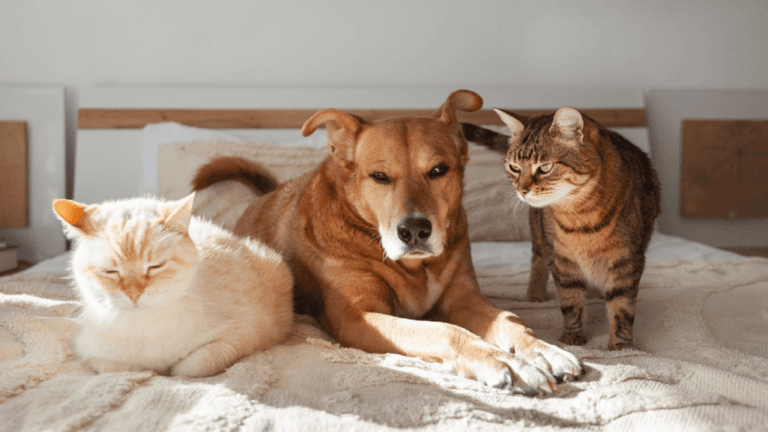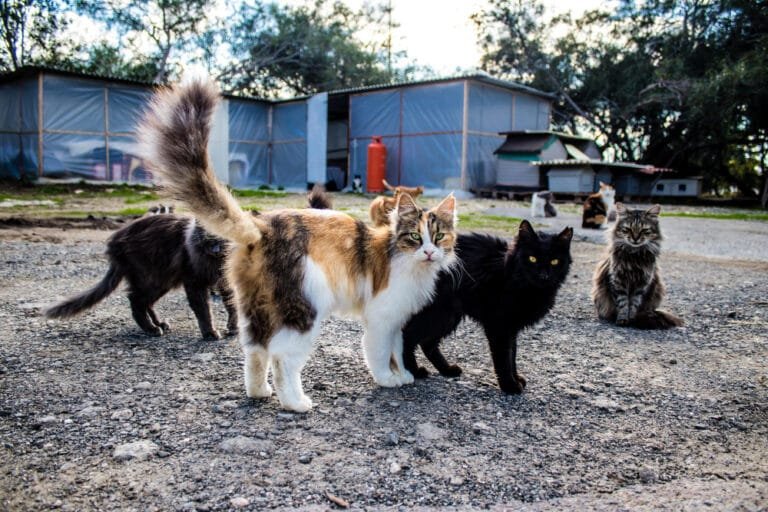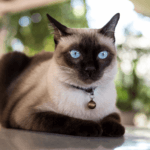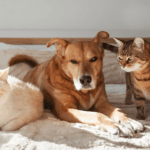The Persian cat is a favorite among cat lovers. They are known for their beautiful looks and gentle nature. Their long hair and flat faces make them stand out. They come in many colors and patterns, making them very popular.
Persian cats are great companions. They are calm and loving, perfect for homes looking for a gentle pet. They like to relax in sunny spots or watch the world go by from a cozy spot.
Even though Persian cats are laid-back, they need daily grooming. This keeps their long hair from getting tangled. It also helps reduce hairballs. If you’re willing to groom them regularly, they make wonderful pets.
It’s important to know that Persian cats can have health issues. Problems like brachycephalic syndrome, dental issues, and polycystic kidney disease can occur. Regular vet visits and care are key to keeping them healthy and happy.
Key Takeaways:
- Persian cats are known for their luxurious coats, flat faces, and round eyes.
- They have calm and affectionate personalities, making them ideal companions.
- Persian cats require daily grooming to maintain their long coats and prevent tangles.
- Regular veterinary check-ups are critical due to specific health concerns.
- Persian cats are well-suited for households seeking a gentle and loving pet.
The History and Origin of Persian Cats
The Persian cat is known for its long, soft fur and calm nature. It has a long history that goes back to ancient times. This breed, often linked with royalty, has won the hearts of many cat lovers for centuries.
Ancient Roots in Persia and Iran
The Persian cat’s origins are in ancient Persia, now Iran. Pictures of these cats date back to 1684 BC. They were loved for their beauty and grace.
Introduction to Europe in the 1600s
In the 1600s, Persian cats arrived in Europe. They quickly became favorites among cat lovers. Queen Victoria’s love for them helped make them symbols of elegance.
The first cat show was in 1871 at The Crystal Palace in London. A Persian cat was featured, marking a big moment in their history. This event made Persians a sought-after breed.
Rise to Popularity and Recognition as a Breed
In the 19th century, Persian cats became more popular. Breeders worked to perfect their looks. By the late 1800s, they were a hit at shows, known for their beauty and grace.
Studies show Persian cats are more like Western European breeds. This means they changed a lot after coming to Europe.
Today, Persian cats are loved all over the world. In 2021, they were the fourth most popular breed, according to the Cat Fanciers’ Association. This shows their lasting charm.
Physical Characteristics of Persian Cats
Persian cats are known for their stunning looks. They have distinctive features and luxurious coats. These cats are loved for their unique appearance and graceful way of moving.
Distinctive Flat Face and Round Eyes
Persian cats have a flat face and round eyes. Their short muzzle and chubby cheeks make them look like dolls. Their large, expressive eyes are set wide apart, adding to their sweet look. The color of their eyes can be deep copper to brilliant blue, depending on their coat color.
Long, Luxurious Coat and Color Variations
Persian cats are famous for their long, thick, and soft coats. They come in many colors and patterns. From solid colors like white, black, and red to patterns like tabby, bicolor, and calico, there’s a Persian cat for everyone. Their fur needs regular grooming to stay beautiful and prevent matting. As Florence Nightingale, the famous English statistician who had over 60 cats, including Persians, once said,
“Cats are the most fascinating kind of folk.”
Medium to Large Build and Graceful Posture
Persian cats have a medium to large build, despite their short legs. They weigh between 7 to 13 pounds (3.2 to 5.9 kg) and are 10 to 15 inches (25 to 38 cm) tall. Males are slightly larger than females. They move with grace, showing off their elegance and poise. Their compact, muscular body and round head make them look balanced.
Persian cats have been loved for centuries. They were first introduced to Europe in the 1600s from modern-day Iran. Today, they are one of the most popular cat breeds in the United States. This is thanks to their stunning looks and gentle personalities.
Persian Cat Personality and Temperament
The Persian cat is known for its elegance and charm. They are calm and affectionate, making great pets for those who want a gentle friend.
Persian cats are laid-back and easy to adapt. They love peaceful places and enjoy lounging with their humans. They may not be very active, but they love to play with toys and games.
“Persian cats are the epitome of a lap cat. They love nothing more than to curl up in your lap and receive gentle strokes and affection.”
Persian cats are very affectionate and bond strongly with their owners. They communicate softly and are loyal to their families. They may be shy with strangers but love their family deeply.
Compatibility with Children and Other Pets
Persian cats are great with children if supervised and treated gently. They are patient but can get stressed if handled roughly. Early socialization helps them get along well with kids.
Persian cats also get along with other pets. They are calm and not aggressive. But, introducing new pets slowly is key to avoid conflicts.
Adaptability to Various Living Situations
Persian cats are adaptable to different homes. They do well in big houses or small apartments. They don’t need much space or exercise, making them perfect for many lifestyles.
But, they need regular grooming to keep their coats clean. Daily brushing and occasional baths are essential. They also do best indoors to stay safe.
In conclusion, the Persian cat’s personality is calm, affectionate, and gentle. They are great with children and other pets. If you want a loving and easy-to-care-for pet, a Persian cat is a great choice.
Caring for a Persian Cat
Owning a Persian cat is rewarding but needs dedication. Their long coats and sweet nature win many hearts. To keep your Persian happy and healthy, knowing their care needs is key.
Grooming Requirements and Techniques
Persian cats have thick, long coats that need daily grooming. Brushing and combing prevent matting. Spend time grooming to avoid painful tangles.
They need regular baths, every 4-6 weeks, to stay clean. Eye care is important, as they produce more tears. Clean their eyes twice a day to avoid stains and infections. Trimming nails and brushing teeth are also important for their health.
Dietary Needs and Feeding Recommendations
Persian cats need a balanced diet to stay healthy. They can easily get overweight, so watch their food intake. Talk to your vet to find the right amount of food for your cat.
Feed a mix of wet and dry food for variety and hydration. Avoid too many treats to prevent obesity and related health issues.
Health Concerns and Preventive Measures
Persian cats are generally healthy but face specific health issues. Brachycephalic syndrome can cause breathing problems. Regular dental care is vital to prevent dental disease.
They are also at risk of polycystic kidney disease. Regular vet visits can help catch and manage health problems early.
Exercise and Mental Stimulation
Persian cats need exercise and mental stimulation. Play with them using toys like laser pointers or puzzle feeders. Provide scratching posts and hiding spots to enrich their environment.
While they may not be as active, regular exercise helps prevent obesity and keeps their minds sharp.
Remember, a well-cared-for Persian cat can bring joy and companionship to your life for many years to come.
Is a Persian Cat the Right Choice for You?
Choosing a Persian cat as your pet is a big decision. These elegant cats are great for the right owner. But, you must understand their needs and traits before deciding.
Persian cats are calm and low-energy, perfect for a peaceful home. They are affectionate and gentle, fitting well in many homes. Yet, they need regular grooming to keep their beautiful coat looking good.
They need daily brushing to avoid mats and furballs. Sometimes, they need baths to stay clean. Not grooming them can cause skin problems and health issues.
They also have breathing problems because of their flat noses. Regular dental care is important to avoid jaw and tooth problems.
Persians are less active and can easily get overweight. Playing with them and giving mental stimulation is key to keeping them healthy. Despite their calm nature, they need daily interaction and love from their owners.
If you’re ready to groom them, provide a loving home, and handle health issues, a Persian cat can be a wonderful pet. They will bring years of love and companionship into your life.
Conclusion
In conclusion, Persian cats are the epitome of feline elegance and grace. Their luxurious coats, gentle dispositions, and affectionate nature make them ideal companions. They have a history dating back to ancient Persia, captivating hearts and minds for centuries.
Persian cats require daily grooming and attention to maintain their stunning appearance and overall health. The rewards of owning one are immeasurable. Their calm and contemplative nature, paired with their subtle intelligence and ability to form strong bonds, make them a joy to have as a part of the family. Whether you prefer the traditional Doll Face or the modern show Persian, these cats come in a variety of colors and variations to suit any preference.
As with any pet, it’s essential to provide Persian cats with regular veterinary check-ups, a balanced diet, and a stable, loving environment. By understanding their unique needs and characteristics, you can ensure a long and happy life for your Persian companion. They will undoubtedly bring beauty, tranquility, and endless love to your home. Owning a Persian cat is a rewarding experience that showcases the true essence of feline elegance and the unbreakable bond between humans and their beloved pets.

